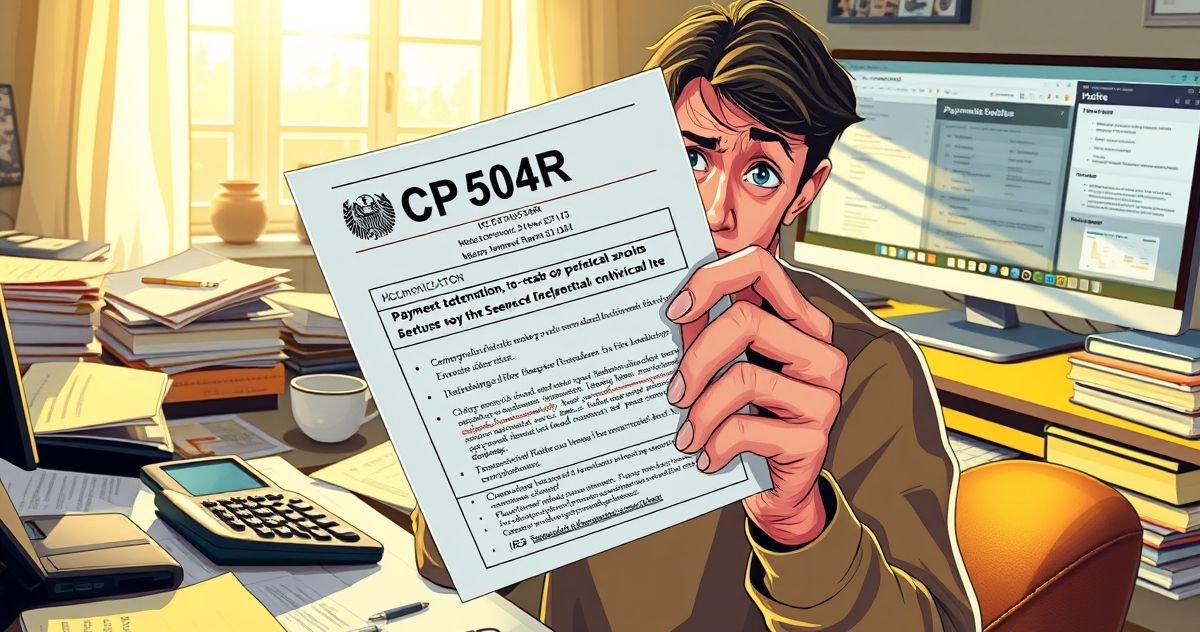Understanding the CP504R Notice
The CP504R Notice is issued by the Internal Revenue Service (IRS) as a stern reminder to taxpayers about overdue tax debts. It plays a critical role in the tax compliance process, informing individuals and businesses of their outstanding tax liabilities and the immediate actions required to resolve them. The notice is part of the IRS’s collection process and is particularly significant as it serves as a final warning before enforcement actions, such as liens or levies, are initiated.
Purpose of the CP504R Notice
The primary purpose of the CP504R Notice is to inform the taxpayer of an unpaid tax debt and the urgent need to address it. Specifically, the notice outlines the amount owed, including any interest and penalties that have accrued. It also serves as a precursor to more severe collection actions, emphasizing the importance of immediate response from the taxpayer. By issuing this notice, the IRS seeks to prompt a proactive approach from taxpayers in settling their debts, thereby avoiding further complications or financial hardships.
Key Features of the CP504R Notice
Several key components are present in the CP504R Notice, each serving to clearly communicate the taxpayer’s situation and the options available:
- Debt Details: The notice provides detailed information about the outstanding tax debt, including the original amount owed, additional interest, and any penalties accrued. It is crucial for taxpayers to review these details to verify their accuracy.
- Payment Deadline: It specifies a deadline by which the payment should be made to avoid further action. This creates a sense of urgency and encourages taxpayers to act swiftly.
- Possible Consequences: The notice warns of potential enforcement actions, such as the filing of a federal tax lien or levying bank accounts and wages, emphasizing the seriousness of the situation.
- Response Instructions: It includes detailed instructions on how to resolve the issue, providing multiple payment methods such as direct debit, check, or electronic payment options through the IRS website. Additionally, contact information is provided for taxpayers who may wish to discuss their notice or disagreement.
Compliance Requirements
Compliance with the CP504R Notice requires immediate action from the taxpayer. This may include paying the full amount due or setting up an installment agreement if the taxpayer cannot afford to pay the entire balance at once. The IRS offers various payment plans, which can be negotiated directly by contacting the IRS as instructed in the notice. Ignoring this notice is not an option, as it leads to severe penalties that can exacerbate financial difficulties.
Penalties and Consequences of Non-Compliance
Failure to respond to a CP504R Notice can lead to dire consequences. The IRS is authorized to enforce collection through several mechanisms:
- Federal Tax Lien: An unpaid tax debt can result in the IRS filing a lien against the taxpayer’s property. This legal claim can hurt the taxpayer’s credit score and impair their ability to secure financing or sell assets.
- Levy Actions: If the taxpayer fails to respond or resolve the debt, the IRS may proceed with levies, allowing them to seize funds directly from bank accounts or garnish wages.
- Additional Penalties and Interest: Continued non-payment will lead to further accrual of penalties and interest, increasing the overall debt owed to the IRS.
Importance in Tax Compliance and Resolution
The CP504R Notice is significant in tax compliance and resolution. It serves as a crucial turning point for taxpayers who have failed to meet their tax obligations, highlighting the urgent need for action. By understanding and responding appropriately to this notice, taxpayers can prevent severe enforcement actions that could compromise their financial well-being. Moreover, effectively resolving the debt helps taxpayers restore their compliance status, ensuring better financial management and planning.
Conclusion
The CP504R Notice is a critical tool used by the IRS to manage non-compliance and ensure timely collection of outstanding taxes. For taxpayers, it provides a clear warning and opportunity to rectify their tax situation before facing more severe consequences. It is imperative for taxpayers to act promptly upon receipt of this notice, seeking professional tax advice if necessary, to resolve debts efficiently and maintain financial health.
